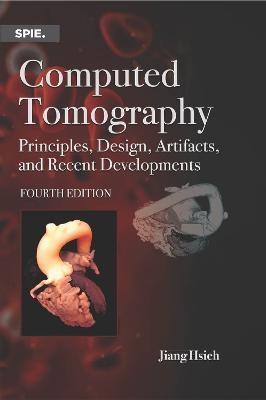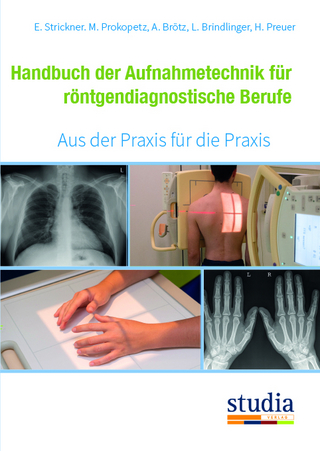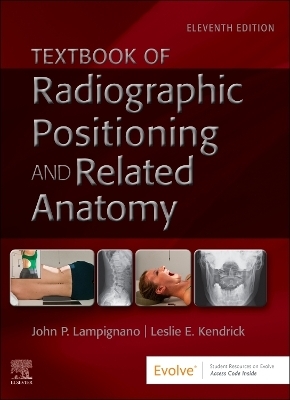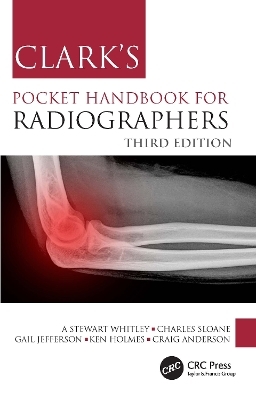
Computed Tomography
SPIE Press (Verlag)
978-1-5106-4687-2 (ISBN)
2021 marks the 50th anniversary of x-ray computed tomography (CT). Over the years, CT has experienced tremendous technological development, driven mainly by clinical needs but also by technology advancements in other fields. Six years after the third edition of Computed Tomography, this fourth edition captures the most recent advances in technology and clinical applications. New to this edition are descriptions of artificial intelligence, machine learning, and deep learning, and their application to image reconstruction, protocol optimization, and workflow. A new chapter covers the principles and advances in dual-energy and spectral CT. A new detector technology, the photon-counting detector, is described in detail, and its impact on CT system and clinical applications is analyzed. Many exciting developments in clinical applications, such as cardiac functional imaging and stroke management, are also covered in detail.
Preface
Nomenclature and Abbreviations
1 Introduction
1.1 Conventional X-ray Tomography
1.2 History of Computed Tomography
1.3 Different Generations of CT Scanners
1.4 Problems
References
2 Preliminaries
2.1 Mathematics Fundamentals
2.1.1 Fourier transform and convolution
2.1.2 Random variables
2.1.3 Linear algebra
2.2 Fundamentals of X-ray Physics
2.2.1 Production of x rays
2.2.2 Interaction of x rays with matter
2.3 Measurement of Line Integrals and Data Conditioning
2.4 Sampling Geometry and Sinogram
2.5 Artificial Intelligence, Machine Learning, and Deep Learning
2.5.1 Overview of AI development
2.5.2 Neural network structure
2.5.3 Neural network training
2.5.4 Recent advances in DL
2.6 Problems
References
3 Image Reconstruction
3.1 Introduction
3.2 Intuitive Approach to Image Reconstruction
3.3 The Fourier Slice Theorem
3.4 The Filtered Backprojection Algorithm
3.4.1 Derivation of the filtered back-projection formula
3.4.2 Computer implementation
3.4.3 Targeted reconstruction
3.5 Fan-Beam Reconstruction
3.5.1 Reconstruction formula for equiangular sampling
3.5.2 Reconstruction formula for equally spaced sampling
3.5.3 Fan-beam to parallel-beam rebinning
3.6 Iterative Reconstruction
3.6.1 Mathematics verses reality
3.6.2 The general approach to iterative reconstruction
3.6.3 Algebraic reconstruction
3.6.4 System modeling process
3.6.5 Optimization algorithms
3.6.6 Image quality benefit of model-based iterative reconstruction
3.6.7 Reconstruction speedup
3.7 Deep Learning–based Reconstruction
3.7.1 General approach
3.7.2 Training dataset selection
3.7.3 Determination of the training dataset size
3.7.4 Examples of DL-based reconstruction
3.8 Problems
Reference
4 Image Presentation
4.1 CT Image Display
4.2 Volume Visualization
4.2.1 Multiplanar reformation
4.2.2 MIP, minMIP, and volume rendering
4.2.3 Surface rendering
4.3 Impact of Visualization Tools
4.4 Volume Visualization
4.4.1 Clinical utility
4.4.2 Hardware technologies
4.4.3 File format
4.4.4 Typical 3D printing workflow
4.5 Problems
References
5 Key Performance Parameters of the CT Scanner
5.1 High-Contrast Spatial Resolution
5.1.1 In-plane resolution
5.1.2 Slice sensitivity profile
5.2 Low-Contrast Resolution
5.2.1 Factors impacting low-contrast detectability
5.2.2 LCD phantoms
5.2.3 LCD evaluation methodologies
5.3 Temporal Resolution
5.4 CT Number Accuracy and Noise
5.5 Impact of Iterative Reconstruction on Performance Measurement
5.5.1 Performance-metric-based approach
5.5.2 Task-based approach
5.5.3 Surrogate task with clinical data
5.5.4 Surrogate task with nonclinical data
5.6 Performance of the Scanogram
5.7 Problems
References
6 Major Components of the CT Scanner
6.1 System Overview
6.2 The X-ray Tube and High-Voltage Generator
6.3 The X-ray Detector and Data-Acquisition Electronics
6.3.1 Direct-conversion gas detector
6.3.2 Indirect-conversion solid-state detector
6.3.3 Direct-conversion semiconductor detector
6.3.4 General performance parameters
6.3.5 Specific performance parameters
6.4 The Gantry and Slip Ring
6.5 Collimation and Filtration
6.6 The Reconstruction Engine
6.7 The Patient Table
6.8 Problems
References
7 Image Artifacts: Appearances, Causes, and Corrections
7.1 What Is an Image Artifact?
7.2 Different Appearances of Image Artifacts
7.3 Artifacts Related to System Design
7.3.1 Aliasing
7.3.2 Partial volume
7.3.3 Scatter
7.3.4 Noise-induced streaks
7.4 Artifacts Related to X-ray Tubes
7.4.1 Off-focal radiation
7.4.2 Tube arcing
7.4.3 Tube rotor wobble
7.5 Detector-Induced Artifacts
7.5.1 Offset, gain, nonlinearity, and radiation damage
7.5.2 Primary speed and afterglow
7.5.3 Detector response uniformity
7.6 Patient-Induced Artifacts
7.6.1 Patient motion
7.6.2 Beam hardening
7.6.3 Metal and high-density object artifacts
7.6.4 Incomplete projections
7.7 Operator-Induced Artifacts
7.8 Problems
References
8 Computer Simulation and Analysis
8.1 What Is Computer Simulation?
8.2 Simulation Overview
8.3 Simulation of Optics
8.4 Simulation of Physics-Related Performance
8.5 Simulation of a Clinical Study
8.6 Problems
References
9 Helical or Spiral CT
9.1 Introduction
9.1.1 Clinical needs
9.1.2 Enabling technologies
9.2 Terminology and Reconstruction
9.2.1 Helical pitch
9.2.2 Basic reconstruction approaches
9.3 Slice Sensitivity Profile and Noise
9.4 Helically Related Image Artifacts
9.4.1 High-pitch helical artifacts
9.4.2 Noise-induced artifacts
9.4.3 System-misalignment-induced artifacts
9.4.4 Helical artifacts caused by object slope
9.5 Problems
References
10 Multislice CT
10.1 The Need for Multislice CT
10.2 Detector Configurations of Multislice CT
10.3 Nonhelical Mode of Reconstruction
10.4 Multislice Helical Reconstruction
10.4.1 2D backprojection algorithm
10.4.2 Reconstruction algorithms with 3D backprojection
10.4.3 Over-beaming (or over-scanning) compensation
10.5 Multislice Artifacts
10.5.1 General description
10.5.2 Multislice CT cone-beam effects
10.5.3 Interpolation-related image artifacts
10.5.4 Noise-induced multislice artifacts
10.5.5 Tilt artifacts in multislice helical CT
10.5.6 Distortion in step-and-shoot mode SSP
10.5.7 Artifacts due to geometric inaccuracy
10.5.8 Comparison of multislice and single-slice helical CT
10.6 Problems
References
11 X-ray Radiation and Dose-Reduction Techniques
11.1 Biological Effects of X-ray Radiation
11.2 Measurement of X-ray Dose
11.2.1 Terminology and the measurement standard
11.2.2 Other measurement units and methods
11.2.3 Issues with the current CTDI
11.3 Methodologies for Dose Reduction
11.3.1 Tube-current modulation
11.3.2 Umbra-penumbra and overbeam issues
11.3.3 Physiological gating
11.3.4 Organ-specific dose reduction
11.3.5 Protocol optimization and impact of the operator
11.3.6 Postprocessing techniques
11.3.7 Advanced reconstruction
11.4 Problems
References
12 Dual-Energy and Spectral CT
12.1 Intuitive Explanation
12.1.1 Material differentiation
12.1.2 Material representation
12.2 Theory of Basis Material Decomposition
12.2.1 Basis material
12.2.2 Projection-space material decomposition (MD)
12.2.3 Image-space material decomposition
12.2.4 Multimaterial identification and quantification
12.2.5 Noise
12.3 Generation of Derivative Images
12.3.1 Monochromatic image
12.3.2 Basis material transformation
12.3.3 Electron density image
12.3.4 Effective atomic number image
12.4 Data Acquisition
12.4.1 Energy-integrating systems
12.4.2 Photon-counting system
12.5 Clinical Applications
12.6 Problems
References
13 Advanced CT Applications
13.1 Introduction
13.2 Cardiac Imaging
13.2.1 Coronary calcium scan
13.2.2 Coronary artery imaging
13.2.3 Cardiac function
13.3 Interventional Procedures
13.4 Stroke: CT Perfusion and Multiphase CTA
13.4.1 Perfusion
13.4.2 Multiphase CTA
13.5 Screening and Quantitative CT
13.5.1 Lung cancer screening
13.5.2 Quantitative CT
13.5.3 CT colonography
13.6 Impact of Artificial Intelligence
13.7 Problems
References
Glossary
Index
| Erscheinungsdatum | 04.01.2022 |
|---|---|
| Reihe/Serie | Press Monographs |
| Verlagsort | Bellingham |
| Sprache | englisch |
| Gewicht | 800 g |
| Themenwelt | Medizin / Pharmazie ► Gesundheitsfachberufe ► MTA - Radiologie |
| Medizin / Pharmazie ► Medizinische Fachgebiete ► Radiologie / Bildgebende Verfahren | |
| Technik | |
| ISBN-10 | 1-5106-4687-6 / 1510646876 |
| ISBN-13 | 978-1-5106-4687-2 / 9781510646872 |
| Zustand | Neuware |
| Haben Sie eine Frage zum Produkt? |
aus dem Bereich


